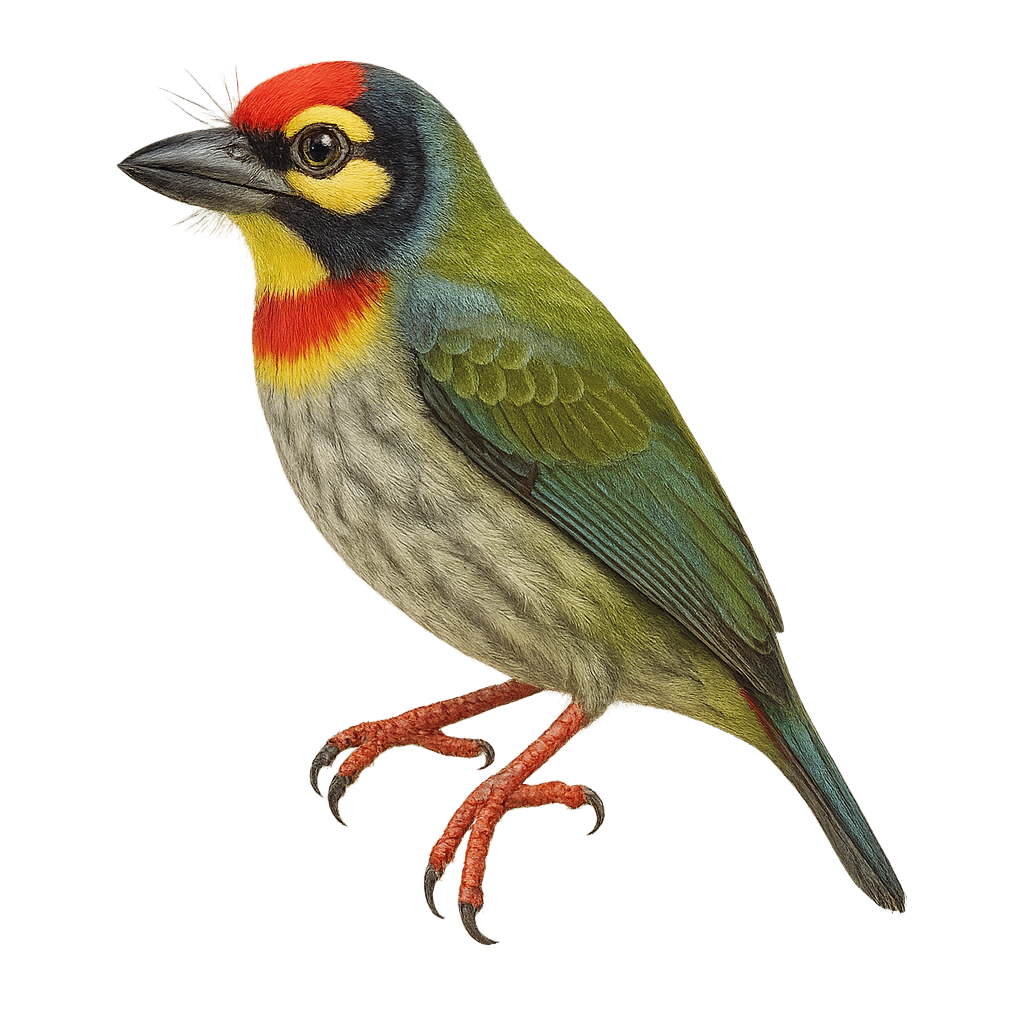Your wildlife photography guide.
Explore the coppersmith barbet in detail, study its behavior, prepare your shots.
Where to observe and photograph the coppersmith barbet in the wild
Learn where and when to spot the coppersmith barbet in the wild, how to identify the species based on distinctive features, and what natural environments it inhabits. The WildlifePhotographer app offers tailored photography tips that reflect the coppersmith barbet’s behavior, helping you capture better wildlife images. Explore the full species profile for key information including description, habitat, active periods, and approach techniques.
Coppersmith Barbet
Scientific name: Psilopogon haemacephalus

IUCN Status: Least Concern
Family: MEGALAIMIDAE
Group: Birds
Sensitivity to human approach: Suspicious
Minimum approach distance: 5 m
Courtship display: February to May
Incubation: 13-15 jours
Hatchings: February to June
Habitat:
Tropical forests, subtropical forests, wooded areas
Activity period :
Primarily active during the day, with peak activity in the morning and late afternoon.
Identification and description:
The Psilopogon haemacephalus, commonly known as the Coppersmith Barbet, is a small, colorful bird from the Megalaimidae family. It is easily recognized by its bright red head, yellow belly, and green wings. This barbet is often found in the tropical and subtropical forests of South and Southeast Asia. It is famous for its repetitive call that resembles the sound of a hammer striking metal, hence its English name "Coppersmith". These birds are primarily frugivorous but also consume insects. They nest in tree cavities, which they excavate with their strong beaks. Although generally solitary, they can be seen in small family groups.
Recommended lens:
400 mm – adjust based on distance, desired framing (portrait or habitat), and approach conditions.
Photography tips:
To photograph the Coppersmith Barbet, focus on tropical forests where it is often active. Use a 400mm or longer telephoto lens to capture detailed images without disturbing it. Be patient and wait for it to perch on an open branch. Listen for its distinctive call to locate it more easily. The natural light of the morning or afternoon is ideal for highlighting its bright colors. Ensure you maintain a safe distance of at least 5 meters to avoid scaring it away.
The WildlifePhotographer App is coming soon!
Be the first to explore the best nature spots, track rutting seasons, log your observations, and observe more wildlife.
Already 1 432 wildlife lovers subscribed worldwide

